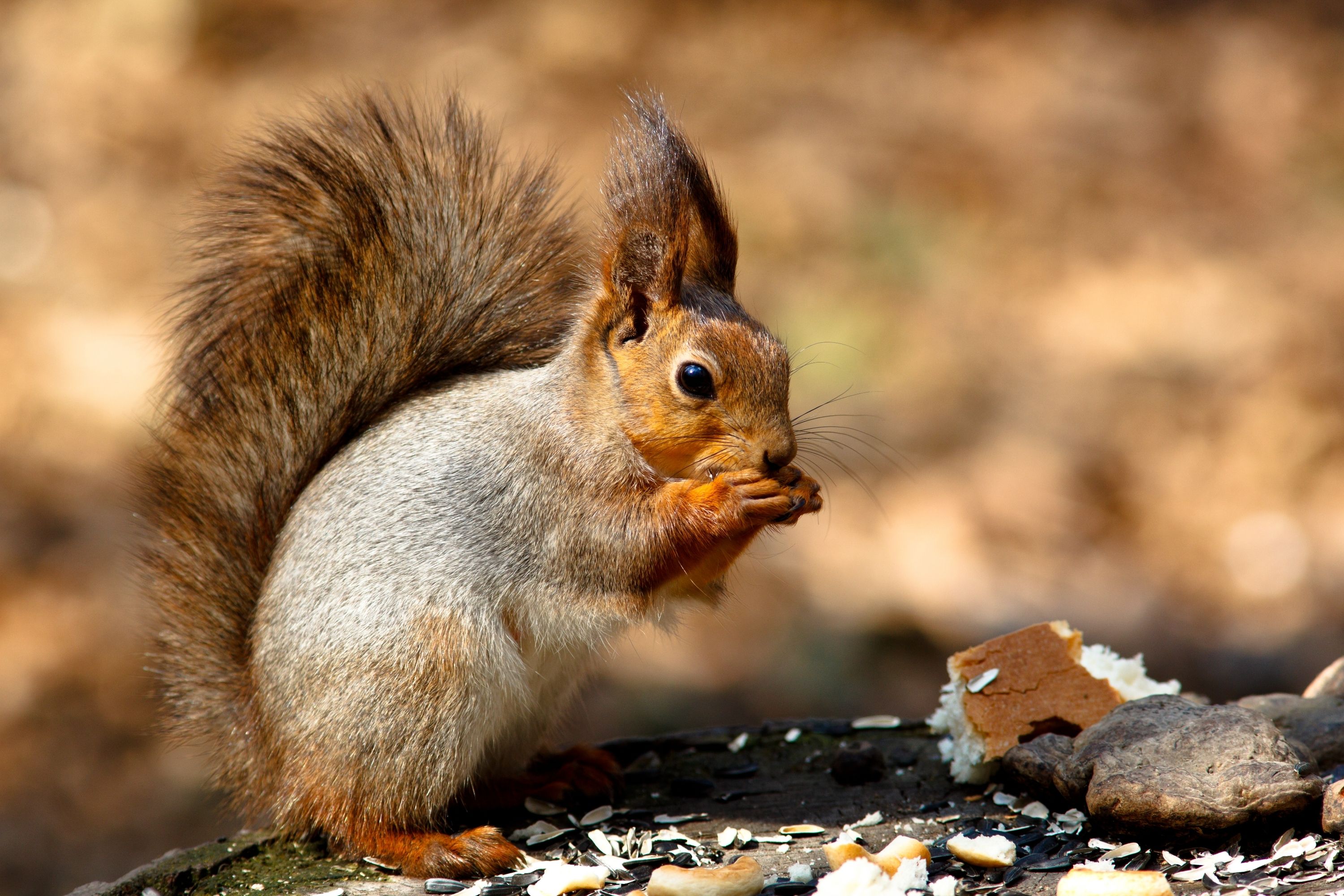Red squirrel
(Sciurus vulgaris)

Description
The red squirrel (Sciurus vulgaris) is a species of tree squirrel in the genus Sciurus common throughout Europe and Asia. The red squirrel is an arboreal, primarily herbivorous rodent. In Great Britain, Ireland, and in Italy numbers have decreased drastically in recent years. This decline is associated with the introduction by humans of the eastern grey squirrel (Sciurus carolinensis) from North America. However, the population in Scotland is stabilising due to conservation efforts, awareness and the increasing population of the pine marten, a European predator that selectively controls grey squirrels. The red squirrel, like most tree squirrels, has sharp curved claws to help it to climb and descend broad tree trunks, thin branches, and even house walls. Its strong hind legs let it leap gaps between trees. The red squirrel also can swim. The coat of the red squirrel varies in colour with time of year and location. There are several coat colour morphs ranging from black to red. Red coats are most common in Great Britain; in other parts of Europe and Asia different coat colours coexist within populations, much like hair colour in some human populations. The underside of the squirrel is always white-cream in colour. The red squirrel sheds its coat twice a year, switching from a thinner summer coat to a thicker, darker winter coat with noticeably larger ear-tufts (a prominent distinguishing feature of this species) between August and November. A lighter, redder overall coat colour, along with the ear-tufts (in adults) and smaller size, distinguish the Eurasian red squirrel from the American eastern grey squirrel. The red colour is for camouflage when seen against the bark of pine trees. Red squirrels occupy boreal, coniferous woods in northern Europe and Siberia, preferring Scots pine, Norway spruce and Siberian pine. In western and southern Europe they are found in broad-leaved woods where the mixture of tree and shrub species provides a better year-round source of food. In most of the British Isles and in Italy, broad-leaved woodlands are now less suitable due to the better competitive feeding strategy of introduced grey squirrels.
Taxonomic tree:







